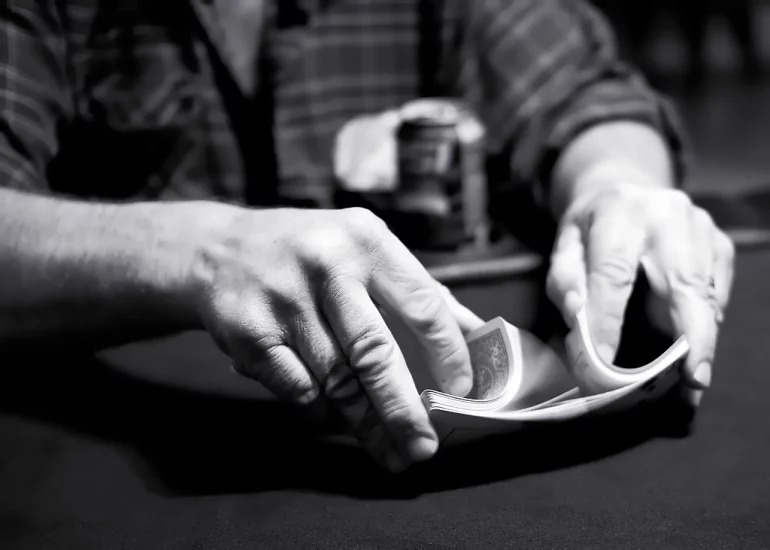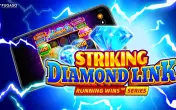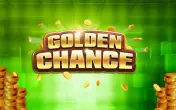
Various tools and techniques for steady profits from playing blackjack go far beyond the basic strategy and counting cards. Most professional players, for example, by all means, try to track certain cards in the shoe to use this information for their purposes during the following shuffle.
Such methods are called tracking. This stuff may seem science fiction for new players, but even approximate figures can be successfully used for profit. And if you found an inexperienced, careless, or lazy dealer who shuffles cards with a standard shuffle, you can "punish" the casino for such an oversight.
Fundamentals of Card Tracking in Blackjack
The most primitive tracking version can be applied when you're lucky enough to see the bottom card in the deck. This happens quite often during the game.
The easiest way is to cut the deck so that the required card either stays in the game or is deliberately left outside.
For example, a pro player can cut the deck to one card and get it to the right hand. Of course, such a procedure can not be mastered in a few days. You must train your eye and develop fast motions for a long time to insert the shear card into the right place without aiming.
Sometimes, players try to hold the sheer over the face of the deck, almost counting the required number of cards. Of course, this approach is immediately suppressed by the dealer and may lead to a re-shuffle or even suspension of the player.
Of course, we should not exaggerate this method's effectiveness. It can rarely significantly affect the game's outcome. However, it will help a lot. Much more effective and valuable complex techniques are sequencing and shuffle tracking. These are probably the most complex blackjack tricks; mastering them sometimes takes years.
Moreover, it brings results only in the case of shallow standard shuffle. Some professionals can undoubtedly keep track of the approximate order of the cards in the whole shoe for any shuffle. Keep this in mind and use the data correctly. Still, long experience has taught them to keep their mouths shut and not advertise their exceptional skills.
Let's see these methods in more detail.
Sequencing in Blackjack
The idea of this method is to memorize a sequence of groups of cards in a deck or even a shoe. As mentioned above, it is complicated and requires the player to have phenomenal memory, observation, and concentration.
Ideally, you need to memorize the whole sequence of cards, going to the shoe. Then track the shuffle and their new position in the shoe.
Of course, finding the card's exact location is impossible. However, even an idea of what part of the shoe stores more tens or aces can already give a significant advantage in the game. Besides, if you notice some of the deck has the most disadvantageous cards, they can be thrown out of the deck during the cut.
You can develop a practical application of sequencing in blackjack, such as tracking particular cards, like aces. Try to remember the cards that were next to them. If a few come out in a row during the next deal, the aces will likely appear. This is the simplest method, but you can start with it.
If you start the game with new decks, and the dealer lays them out to let you make sure the deck is complete, watch how carefully he shuffles them.
Believe us, not all dealers diligently perform to their duties.
Sometimes it gets ridiculous – when the cards come out of the shoe in the same sequence as in the deck parsed by suits. You know how you can use such a situation.
Making a slight digression, we note that the human factor is land-based casinos' main advantage. Even professional dealers, not to mention newcomers, often make serious mistakes. We've met people who spent days in the casino playing with the lowest bets, earning bonuses, and winning from dealers' mistakes.
Blackjack Shuffle Tracking
It is a more sophisticated way of tracking the order of the cards in the deck. We do not intend to study this method in the review, so let's discuss the critical aspects of shuffle-tracking, leaving a more profound study for the following detailed articles.
Shuffle tracking is double-counting. Only a limited number of professional players master it.
- The first counting is standard;
- The second is conducted for each of the decks in the shoe separately.
Card counting is based on the previous deal in each new shuffle, and it is vital to track the movement of cards in the shoe.
This method is so complex that just a few players can carry it even after many years of training. Besides, even a minor distraction nullifies all efforts. Most often, shuffle tracking is conducted together with someone. One player makes general counting and corrects the bets, and the other counts the cards in each deck separately and makes the cuts.
Of course, information is exchanged between the players secretly using unique signs. But even in this case, the method's effectiveness requires the highest professionalism.
Of course, shuffle tracking can significantly increase the chances of winning, but only a few can master it. In the following articles, we will describe all aspects in more detail.
| Name | Soft | Return to player | ||
|
|
99.78% | |||
|
|
99.71% | |||
|
|
99.7% | |||
|
|
99.69% | |||
|
|
99.65% | |||
|
|
99.6% | |||
|
|
99.59% | |||
|
|
99.54% | |||
|
|
99.54% | |||
|
|
99.54% |
Conclusion
Do you use any of these professional techniques when playing blackjack? How often do you play for money? How successful are you?
You are welcome to share your experience and ask questions in the comments.

































